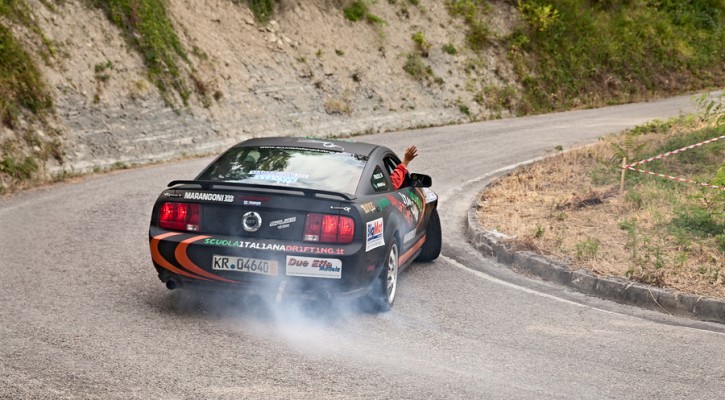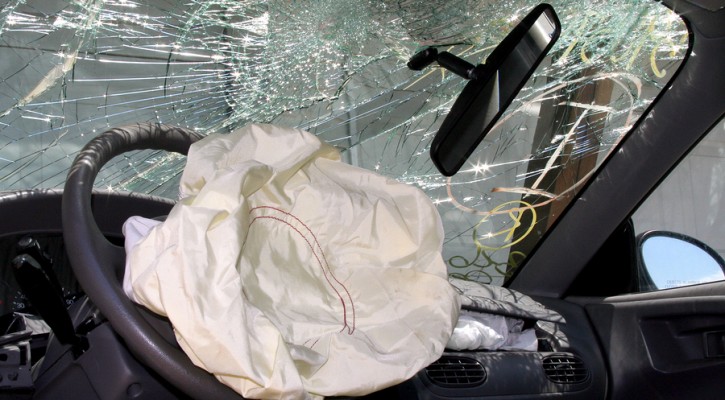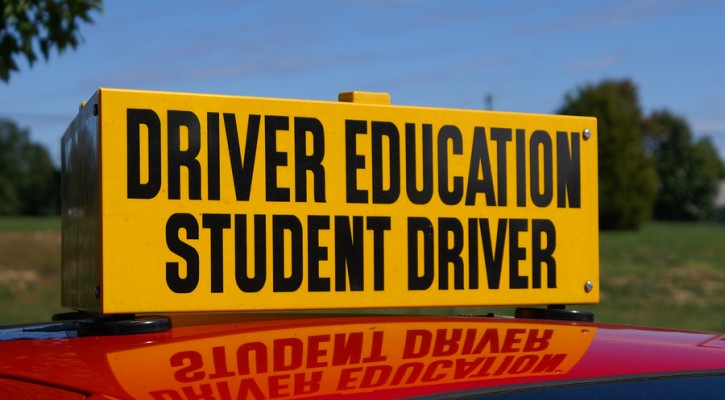Category Archive: Driving Skills

Teens Drive Better When Mom Comes Along
May 8, 2015
Teens drive better when mom comes along and they feel good about it too according to a study conducted by the Beckman Institute for Advanced Science and Technology, University of Illinois, Urbana – Champaign.
In this novel study, 25 fourteen year old teens were each placed in an fMRI machine that allowed the researchers to view and record their brain activity while driving a computer simulated driving course. The fMRI machine shows blood flow to areas of the brain that are most active. The teens were paid for their participation but they were also told that, if they scored the fastest time, they would get more money.
The course had 26 intersections and the timing of the lights and the presence of cross traffic varied so that the teens wouldn’t experience the same traffic patterns each time. If the teen stopped at a traffic light, it cost them three seconds added to their time. If they attempted to run a red light and were involved in a “crash,” it cost them 6 additional seconds.
When teens drove alone, they were much more likely to try to make it through a yellow light before it turned red. If they made it through safely, without costing them any more time, the researchers were able to see more blood flow to the reward center of the brain. In other words, the teens felt good about their decision and you could witness that good feeling as it appeared in the brain.
When the teens were told their mom was watching, the teens drove much more carefully and tended to stop when they encountered a yellow light. The strange thing is that, with mom “in the car,” the same reward area of the brain lit up when they drove safely.
It appears that, if a parent is along, teens tend to take fewer chances and they actually feel rewarded by driving in a safe manner.
Of course mom can’t be in the car at all times but there are systems that allow moms to look over their teen’s shoulder. There are a variety of apps and plug-in systems that report if the teen is driving aggressively, turn off the cell phone and inform the parents of the teen’s location. If only they could bake cookies too.
Read more: Having Mom in the Car Changes Teen Driver’s Brain

Passengers Affect Teen Safe Driving Attitude
February 24, 2015
Teen passengers can have a big affect on a teen driver’s safe driving attitude according to a recent study published in the journal Health Psychology. According to the research, a teen passenger’s personal attitudes about risky driving habits can influence the teen driver to engage in risky driving behaviors.
It has long been known that, the more teen passengers there are in a teen driver’s car, the greater the risk of a crash. According to a 2012 study by the AAA Foundation For Traffic Safety, a teen driver’s risk of involvement in a deadly crash increases by 44 percent with one teen passenger in the vehicle. The risk doubles with two teen passengers and quadruples with three or more passengers.
According to the new study, a teen driver is more willing to engage in risky driving behaviors if he (this is especially true for male teens) perceives that his passengers approve of those risky behaviors. The passengers don’t have to specifically tell the driver to take risks but can give subtle clues of their approval.
To find out why this was so, the researchers studied 66 teen drivers in a simulated driving situation. The teens were told that they were being paired up for the simulation with another randomly selected teen (actually a young looking research assistant). The research assistants played two different rolls. Upon first meeting one assistant would arrive late and say “Sorry I was a little late getting here. Normally I drive way faster, but I hit like every red light.” The other research assistant would tell his teen partner “Sorry I was a little late getting here. I tend to drive slowly, plus I hit every yellow light.”
The teen was then asked if his partner could try out the simulator first “just for fun”. The research assistant who said he tended to drive fast would then “drive” the simulator without using a seat belt and in an aggressive manner. The assistant who said he typically drove slowly obeyed the traffic rules and drove as safely as he could.
The research subjects were then given the opportunity to drive the simulated course alone and then with their partner as a passenger. Their driving behavior was measured by tracking whether or not the subject failed to stop for red lights and how much time was spent in the intersection after the light turned red.
All the research subjects tended to take more risks when they had a passenger with them but those with the aggressive driving partner took far more risks that those with the risk-averse partner. Even though they had just met their passenger and the passenger didn’t pressure the teen drivers in any way, the teen drivers tended to adopt the risky or safe driving attitude of their passengers.
According to research by the Children’s Hospital of Philadelphia, only 10 percent of teens correctly view passengers as potentially hazardous. Teen peer pressure can be overt or it can be subtle. Teens who ride as passengers in another teen’s vehicle should be taught that it’s OK to tell the driver to stop his or her risky behavior. Both teen drivers and teen passengers need to be taught that the actions of passengers can be distracting to the teen driver and taught to modify their behavior accordingly.

“ Swangin ” Stupid And Deadly
November 25, 2014
A new word was introduced into our vocabulary; “ swangin.” The term, first introduced by the hip hop artist Stalley on a 2013 album, means swerving from lane to lane as you drive down the road. While it may make for a good song, in practice, it’s dangerous, deadly and not at all smart.
Two days ago, an 18 year old driver who was swangin on a roadway in a business district of Houston,Texas lost control of his car, slammed into a fence and rolled over. His 15 year old female passenger, who wasn’t wearing a seat belt, was ejected from the vehicle and killed.
The problem with swangin is that, as the car swerves back and forth, the tires have less contact with the road. If the speed is high, there’s even less tire contact. Once the tires lose contact with the road, there’s no way to control the car.
No matter how good a driver you may think you are, if you’re swangin, there’s no way you can overcome the physics involved in keeping the car on the road. When you put these kinds of stresses on a car, you’re asking for trouble.
This isn’t the first time someone was killed as a result of swangin. Another Houston area teen lost his life as the result of a swangin crash in October.
Read more: ‘Swangin’ crash kills 15-year-old female passenger; driver charged

When Teen Crashes Hit Close To Home
October 30, 2014
I’ve been writing articles on teen crashes and teen driving safety for years and, quite frankly, it’s becoming more and more difficult to come up with something new and fresh when the teens keep killing themselves the same way month after month.
Last week the issue hit close to home when one of my Grandson’s close friends was killed in a car crash. The details were sketchy because the crash is still being investigated but, according to the newspaper account, he applied his brakes when another vehicle entered the road, the passenger side wheels left the roadway and it appears he over-corrected. His vehicle flipped approximately four or five times and, because he wasn’t wearing a seat belt, he was ejected from the vehicle. He was taken to a nearby hospital where he was pronounced dead.
His passengers who were wearing seat belts weren’t seriously injured and were cleared at the scene.
In August, in the “Ask the Driving School Instructor” column, I answered a question on the most common type of car crash experienced by teens. In that column I wrote that the most common type of fatal teen crashes, according to all the news reports I read, involved teen drivers who:
- were either distracted, speeding, or both;
- veered off the road;
- over-corrected, sending their vehicle into a spin or tumbling over; and
- weren’t wearing a seat belt.
The tragic thing about this and all the other crashes that kill more than five teen drivers a day is that they were so easily preventable.
Teens need to be taught how to safely recover if their vehicle leaves the side of the road. The natural instinct is to jerk the steering wheel back toward the roadway (over-correct) but, at high speeds, that can cause the vehicle to spin out or flip over. If young drivers find themselves in that position, they should be taught not to give into that natural instinct to jerk the wheel back toward the road. Instead, they should grip the wheel, watch where they’re going and slow the vehicle down. After slowing to a safe speed and checking that the roadway is clear, they can then turn the wheel to reenter the road.
Most important of all, teens need to learn the importance of wearing a seat belt. Among the 16 to 20 year old age group, 55 percent of the vehicle occupants who were killed in teen crashes in 2012 weren’t wearing a seat belt. No matter how bad the crash may be, you’re always better off and have a far greater chance of surviving a crash if you’re properly buckled into your seat belt and shoulder harness. Had he been wearing his seat belt, he may have walked away from the crash with his friends. If this young man’s grieving friends take anything else away from this crash, hopefully they will learn to always wear a seat belt.
There’s no such thing as a car accident! Accidents are something we have no control over. Car crashes happen when one or more drivers make a bad choice that leads to tragic consequences. Even if you can’t avoid a crash, you can still make the right choices to survive it.

Teens With Drivers Ed Have Fewer Crashes and Tickets
September 12, 2014
Teens who complete Drivers Ed (DE) have fewer crashes and receive fewer traffic tickets than teens who don’t complete a drivers ed program according to a study published by the AAA Foundation. The difference between DE and non-DE teens, while small, are still statistically significant according to the researchers.
The study looked at a large number of teen drivers in the Province of Manitoba Canada and the State of Oregon. To determine a baseline, the studies surveyed teens who planned to take drivers ed and those who didn’t. Afterwards, they followed up with additional surveys, and performances in driver simulations. They also looked at scores on the driver’s exam and driving records.
In Oregon, the study compared the driving records of a total of 94,342 DE and non-DE teen drivers and found:
- DE teens had significantly fewer crashes than non-DE teens over the first 18 months of independent driving.*
- DE teens had 4.3% fewer crashes than non-DE teens during the entire period of the study.
- DE teens had significantly fewer convictions for traffic offenses than non-DE teens during the first 18 months of independent driving.*
- DE teens had 39.3% fewer convictions for traffic offenses than non-DE teens during the entire period of the study.
* Teenagers’ crash and near-crash rates were nearly 4 times the rates of adults during the 18 months following licensure. (Insurance Institute for Highway Safety)
In both Oregon and Manitoba, the researchers found that:
- DE teens had a slightly better knowledge of safe driving practices.
- DE teens were more knowledgeable of and more supportive of Graduated Driver License (GDL) laws.
Even though the differences were small, that still means a significant number of teens were spared injury and possibly death in a traffic collision. Lower traffic conviction rates mean lower insurance rates and less money spent on traffic fines.
In previous articles we have made the case that the US has one of the the worst driver training program for teens in the industrialized world. Most European countries not only require a classroom drivers ed course but also a significant number of hours behind the wheel with a trained and licensed driving instructor before they can apply for a license. In Canada, if you don’t take a drivers ed course, you must wait until age 16 before applying for a learner’s permit. After one year on a learner’s permit, the teen can apply for a “novice” driving permit by passing a road test. After two years of incident free driving as a novice driver, they must pass another road test to get a full license.
In the US, we depend on parents to teach a teen to drive and, usually, those parents lack the proper training to teach their child how to drive. After only one year of supervised driving and passing the road test, there are few limits on a teen’s solo driving.
High school drivers ed programs are rapidly disappearing because, when school budgets have to be cut, drivers ed is usually one of the first programs to go. In the Oregon study mentioned above, out of the 94,342 teen drivers observed, only 22 percent had taken a drivers ed course.
If your teen’s school doesn’t offer a drivers ed course, consider enrolling the teen in a private, state approved course. It might just save his or her life.
